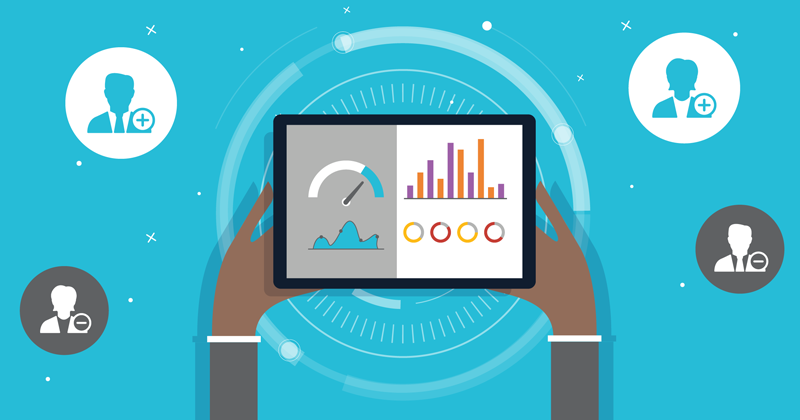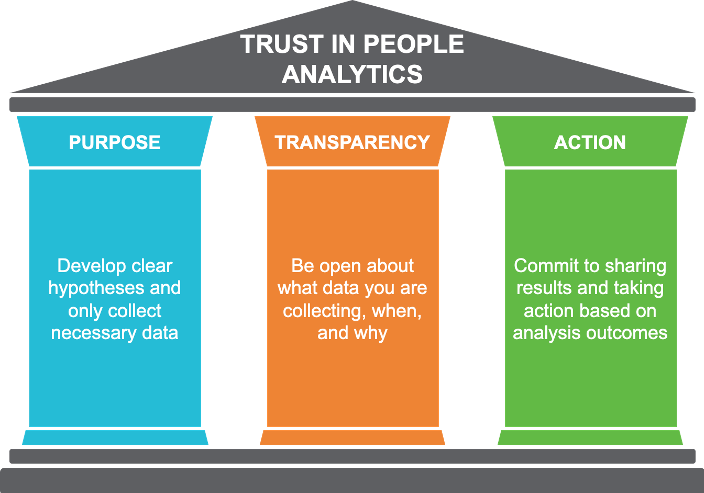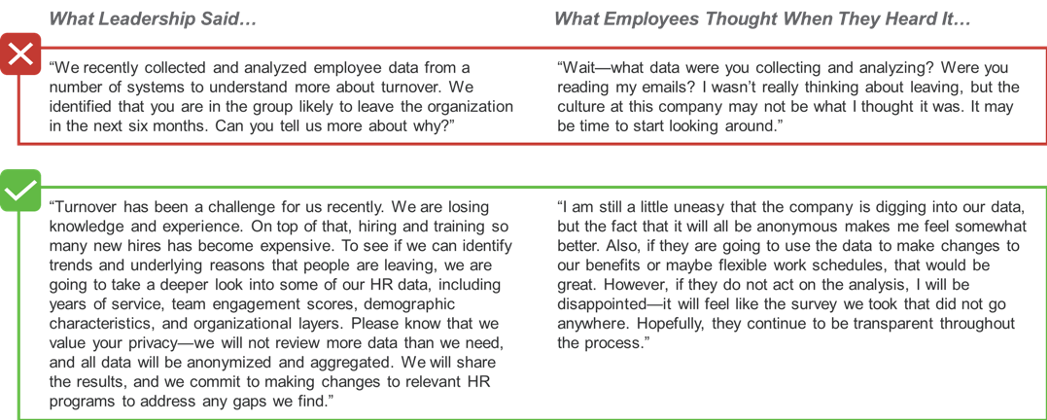
HR professionals hold the “keys to the kingdom” when it comes to employee data and must always keep in mind the saying, “with great power comes great responsibility.” People analytics, as defined in our article, “Demystifying People Analytics,” is the practice of turning disparate employee data into insights that drive business decisions. Successful and sustainable people analytics organizations are built on instilling trust and proving value for the organization as a whole, as well as for individual employees.
The continual advances in technology and new ways to monitor human interactions, performance, habits, and beyond have made for exciting times in people analytics. There are copious amounts of data that can be analyzed and turned into descriptive, predictive, or even prescriptive decision support models. However, organizations need to balance these seemingly limitless possibilities with data privacy regulations that are becoming more widely adopted (e.g., the European Union’s General Data Protection Regulation and California’s Consumer Privacy Act), as well as employee preferences to opt out of data collection. Additionally, just because specific uses of employee data are acceptable in the eyes of regulators does not mean that they will be culturally acceptable inside every organization.
So how and where do you draw the line?
There are three basic principles to ethically deliver people analytics—purpose, transparency, and action (see Figure 1). Although these principles are straightforward, ignoring any of the three can quickly turn organizational and employee sentiment against current and future people analytics initiatives.
Figure 1: Basic Principles to Ethically Deliver People Analytics

Principles in Action
Let’s take a look at an example. Imagine organizational leadership would like to understand what is driving turnover in their seasoned staff in order to inform retention future strategies. It is important to consider the point of view of both the employer and the employee, including how each can benefit from the data collection and analysis.

While the scenarios highlight the extremes, we have all seen the impact that different types of messaging can have. In the first scenario, the organization has already performed data collection and analysis, and the employees are caught by surprise. In the second, leadership leverages all three principles to deliver a message that is better received by employees and is more likely to garner organizational support. The additional planning and empathetic approach involved in the second scenario will help ensure success of the initiative.
Foundation for Success
As outlined in “Demystifying People Analytics,” trust and value can only be delivered with a strong underlying people analytics foundation and strategic plan. Oftentimes, initial efforts that are not accompanied by holistic planning or ethical considerations significantly undermine people analytics organizations and initiatives. With more than 35 years of experience in HR operations and shared services consulting, ScottMadden has helped build effective and impactful people analytics practices for countless organizations. Contact us to discuss how to best identify the most impactful people analytics opportunities for your organization and how to work through the myriad of challenges and considerations.
Additional Contributing Author: Elizabeth Schultz







































